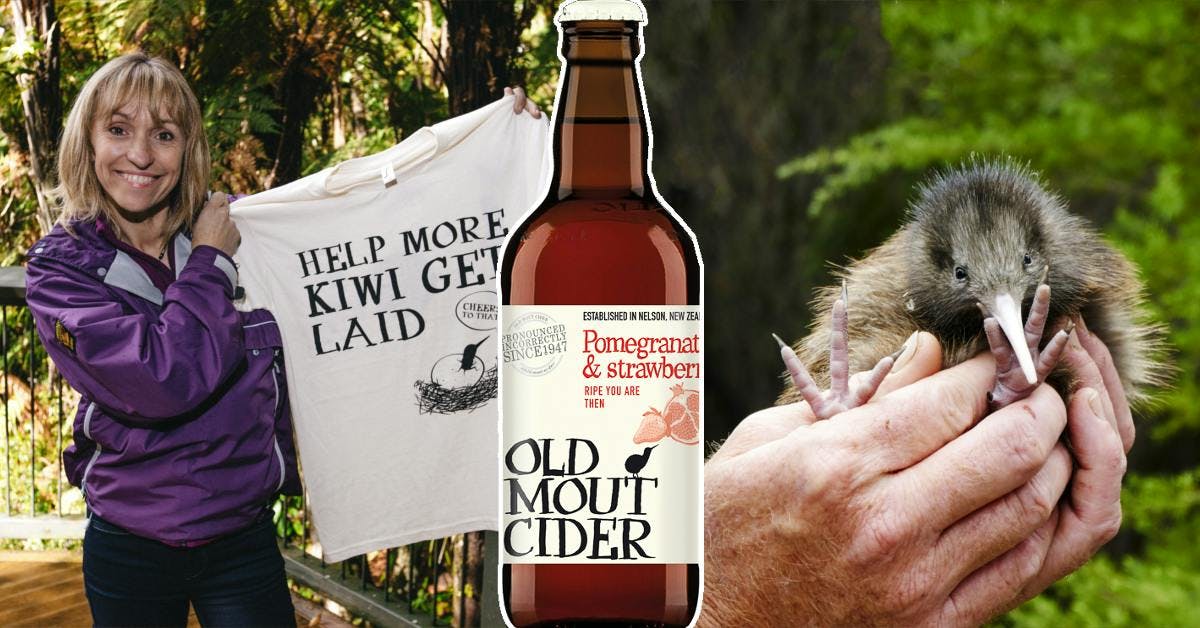
Behind Old Mout's fight to save the kiwi birds
When the Old Mout team heard that the population of New Zealand’s iconic kiwi birds had fallen a staggering 99%, they knew they had to do something to help this quirky, irreplaceable species. Find out how Old Mout, the makers of the delicious Pomegranate and Strawberry cider in October's box, and wildlife charity Kiwis for kiwi are saving kiwi birds – and what you can do to help!
New Zealand is famous the world over for its amazing ecosystem. But creatures this unique can also be hard to protect – and that’s true even for the nation’s namesake, the kiwi bird.
These flightless birds are at the brink of extinction. A population that was once five million has dwindled to just 50,000, and every year that number drops by 1,000 kiwi birds. With only one in every 20 kiwi birds born surviving to adulthood, it is down to our generation to decide whether these marvels of nature make a recovery or simply cease to exist.
Fortunately, kiwi birds have two important allies determined to turn things around: the charity Kiwis for kiwi Trust and the team behind the Old Mout Cider in October's Gin of the Month box.
Emma Sherwood-Smith of Old Mout says, “At Old Mout, nothing gets us more excited than nature. We passionately believe in preserving nature, as it gives us the epic landscapes that inspire our fruity ciders as well as our adventurous spirit. This is why we’re working with Kiwis for kiwi Trust to help the kiwi family grow again – and every Old Mout bought will help give kiwi the chance to thrive again.”
Working in conjunction with Kiwis for kiwi, Old Mout is supporting the kiwi population through Operation Nest Egg. By relocating kiwi to predator-free sites – called Kohanga – Old Mout and Kiwis for kiwi can help more kiwi birds reach adulthood and, crucially, hatch the next generation.
Image: New Zealand Department of Conservation
In this way, Old Mout and Kiwis for kiwi can tip the scales towards the side of survival. Operation Nest Egg is a conservation project that really is working. The vital project ensures the odds of kiwi surviving to adulthood are significantly improved, increasing to one in every 13.
As Emma Sherwood-Smith explains, “Each kiwi we save could live for up to 50 years, and lay as many as 100 eggs – just imagine the impact that will have on the endangered population!”
When you crack open a bottle of Old Mout Cider, you’re helping the kiwi bird population survive and thrive in New Zealand. But drinking delicious cider isn’t the only thing you can do to help!
Check out the Kiwis for Kiwi Trust website (www.kiwisforkiwi.org) for lots of amazing ideas on how you can help these baffling birds live on. And, to learn more about why these birds are worth saving, check out these five amazing facts about kiwi birds.
5 Fascinating Kiwi Facts
1. Nobody knows how they got to New Zealand
Kiwi are members of an ancient group of flightless birds called the ratite group, which means they can’t fly. Nobody is quite sure how these little birds managed to cross the ocean to reach the shores of New Zealand – or even when they arrived — but we do know they have been around since dinosaurs roamed the earth.
2. They’re considered ‘honorary mammals’
These little birds have so many unusual habits that they’re sometimes called honorary mammals. Their feathers are hair-like, they nest underground in burrows and they’re omnivorous, which means they’ll eat everything from seeds to frogs.
3. They leg eggs a third of the size of their body
Although kiwi birds are roughly the same size as a chicken, their eggs are ten times the size of a hen’s! Scientists wonder whether kiwi were originally much bigger birds whose eggs stayed the same size as they shrank, but for now the kiwi’s massive egg remains a mystery.
4. Kiwi have nostrils at the end of their beak
Kiwi have an exceptional sense of smell as their nostrils are at the end of their beak to help them seek out food underneath the ground. However, despite physically having a very long beak, kiwi technically have the shortest beak of all birds! This is because beaks are measured from the nostrils to the tip of the beak, and for the kiwi, this distance is negligible.
5. They’re sacred to the Maori
The kiwi bird is sacred to the Maori, who historically hunted them only with the greatest reverence and sewed their feathers into sacred ceremonial garb reserved for chiefs. Ceremonial chants and rituals were performed before every kiwi hunt; the birds were thought to be under the special protection of Tane Mahua, the god of the forest, and hurting them needlessly would lead to trouble.







